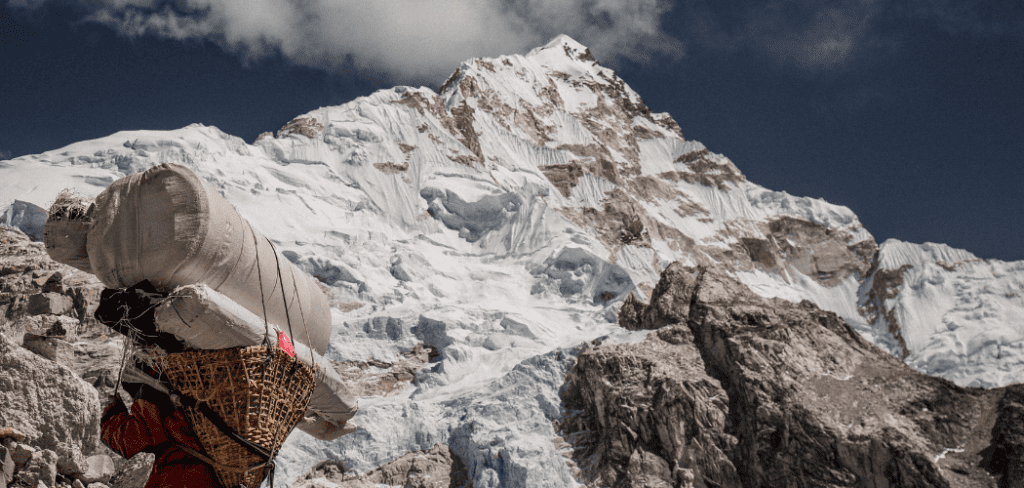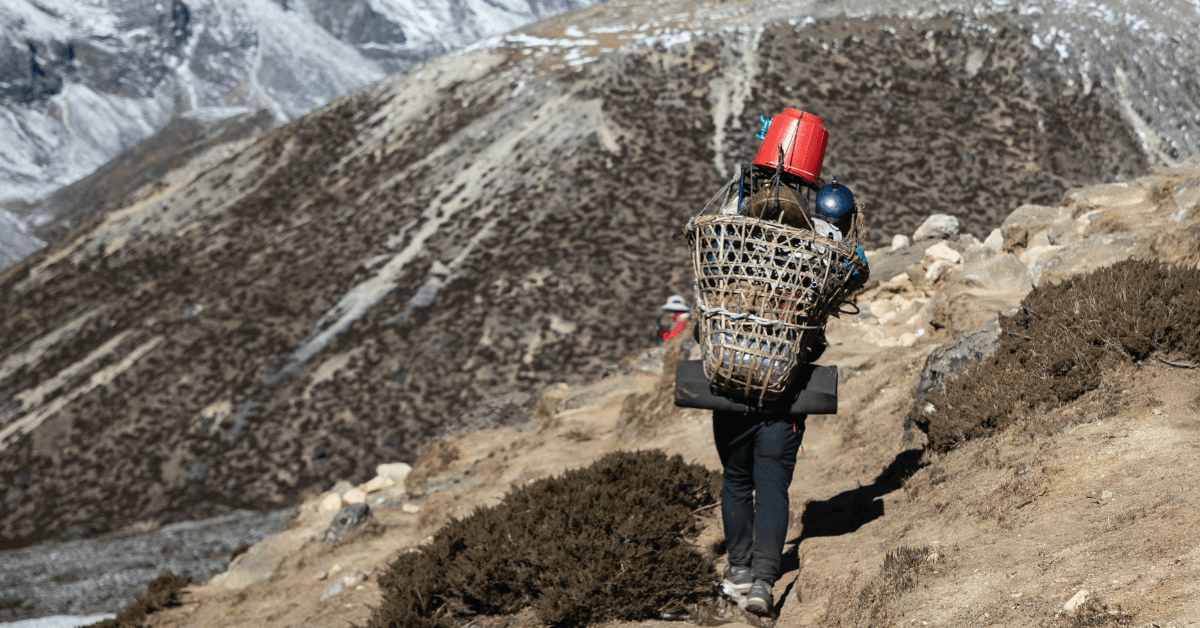Mount Everest, the highest mountain in the world, has long been a source of fascination and intrigue for mountaineers and adventure seekers. While thousands of climbers have attempted to reach the summit, only a select few have succeeded.
One group that is often overlooked in discussions of Mount Everest is the Sherpas, the indigenous people of the Himalayas who have played a critical role in supporting climbers on their quest to reach the top. But despite their vital role in the climbing community, Sherpas rarely, if ever, stand on the summit of Mount Everest. In this article, we will explore the reasons why Sherpas don’t typically summit the mountain, and the unique challenges they face as a result of their involvement in the climbing industry.
Why Don’t Sherpas Stand On The Top Of Mount Everest
The Sherpas are a vital part of the climbing community on Mount Everest. They are responsible for carrying equipment, setting up camps, and providing guidance and support to climbers. However, despite their critical role in the climbing process, Sherpas rarely stand on the summit of Mount Everest. Here is the first reason why Sherpas don’t stand on the top of Mount Everest.
One reason for this is that Sherpas are often hired as guides and support staff, rather than climbers. Their primary job is to assist others in reaching the summit, rather than to reach it themselves. Additionally, the dangers and physical demands of climbing at such high altitudes are significant, and many Sherpas prefer to focus on the more practical aspects of the climb rather than the summit itself.
Another reason for the lack of Sherpa summits is the cultural and religious significance of the mountain to the Sherpa people. In Sherpa culture, Mount Everest is considered a sacred mountain, and the summit is believed to be the home of the gods. Climbing to the summit is seen as a form of disrespect and sacrilege.
Furthermore, Sherpas are also aware of the risks associated with climbing at such high altitudes. The dangers of altitude sickness, freezing temperatures, and falling ice are all very real, and many Sherpas choose not to put themselves in harm’s way in order to reach the summit. Additionally, the climbing industry in the Himalayas is often criticized for its lack of safety regulations and poor working conditions, which can make climbing even more dangerous for Sherpas.
Despite the fact that Sherpas do not typically stand on the summit of Mount Everest, they play a vital role in helping others to reach it. Their knowledge of the mountain, combined with their strength and endurance, make them essential members of any climbing team. The risks and challenges faced by Sherpas are also a reminder of the dangers of climbing and the importance of respecting the mountain and its significance to the Sherpa people.
Do Sherpas Go To The Top Of Everest?
It’s worth noting that, despite the lack of Sherpas standing at the summit, some have attempted to summit. However, the number of Sherpas who have reached the summit is relatively low, and many of them were not local Sherpas but rather Nepali or Tibetan who were hired by expedition companies and were not part of the traditional Sherpa community.
In recent years, climbing Mount Everest has become more commercialized, with more and more people attempting to reach the summit each year. This has led to overcrowding, long wait times, and increased danger on the mountain. Sherpas, who are often responsible for carrying equipment and setting up camps for climbers, are also often put at risk by the increased number of climbers on the mountain.
So, Yes, Sherpas do go to the top of Everest, albeit rarely because most of the time it’s not worth the risk.
Related: Social Benefits Of Hiking
Do Sherpas Need Oxygen On Everest?

Sherpas, like all climbers, need to use supplemental oxygen while climbing on Mount Everest. The summit of Mount Everest is at an altitude of 29,029 feet (8,848 meters) above sea level, which is well above the “death zone,” an altitude above 26,000 feet (8,000 meters) where the human body can no longer acclimatize and survive without supplementary oxygen. The lack of oxygen at such high altitudes can cause altitude sickness, which can be fatal if not treated.
That said, since Sherpas spend a lot of time on the mountain, they may have a better chance of acclimatizing. But still, they need to use oxygen to avoid any altitude sickness and to be able to perform their tasks efficiently.
How Do Sherpas Survive Without Oxygen?
Despite everything we’ve covered so far, you must’ve heard of some Sherpas who were able to summit Mount Everest without the use of supplemental oxygen. Wondering why?
Well, some Sherpas who have spent their entire lives in the high-altitude regions of the Himalayas may have a better chance of acclimatizing to the lack of oxygen at high altitudes. They have grown up in high-altitude regions, and their bodies have adapted to the thin air over time.
Additionally, Sherpas are known for their excellent physical condition and endurance, which can also help them to better tolerate the lack of oxygen. However, despite their ability to adapt to high altitudes, it’s still recommended for them to use oxygen while climbing Mount Everest. This is because even though they may be less affected by altitude sickness, the lack of oxygen at such high altitudes can still impair their performance and make it more difficult to perform tasks, such as carrying equipment and setting up camps.
Do Sherpas Have Bigger Lungs?
There is some evidence to suggest that Sherpas may have larger lung capacities than the average person, which could help them to better tolerate the lack of oxygen at high altitudes. Studies have shown that Sherpas have a higher lung volume-to-body mass ratio compared to lowlanders. Additionally, they have been found to have a greater ability to extract oxygen from the air, which could help them to better cope with the low oxygen levels at high altitudes.
However, it’s important to note that these findings are not conclusive and more research is needed to fully understand the adaptation of Sherpas to high-altitude living. Additionally, genetics, lifestyle, and environment also play a role in the ability of Sherpas to adapt to high altitudes.
Related: Best Snacks For Hiking In Hot Weather
Do Sherpas Get Altitude Sickness?
Yes, they do, but usually not to the same degree as regular climbers. That said, Sherpas, like all climbers, are at risk of altitude sickness when climbing at high altitudes, including on Mount Everest. Altitude sickness, also known as Acute Mountain Sickness (AMS), is a condition that occurs when the body is not able to acclimatize to the lower levels of oxygen at high altitudes.
It is true that Sherpas, who have spent their entire lives in the high-altitude regions of the Himalayas, may have a better chance of acclimatizing to the lack of oxygen at high altitudes and may be less likely to experience altitude sickness. However, this does not mean that they are immune to it. Studies have shown that Sherpas can still experience altitude sickness, especially if they are climbing to a higher altitude than they are used to or if they are climbing too quickly.
Additionally, it’s worth noting that the severity of altitude sickness can vary from person to person, and it can also depend on factors such as the rate of ascent, genetics, and overall health. Therefore, Sherpas, like all climbers, must be aware of the symptoms of altitude sickness and take precautions to avoid it. This includes using supplemental oxygen, acclimatizing properly, and descending if necessary.
